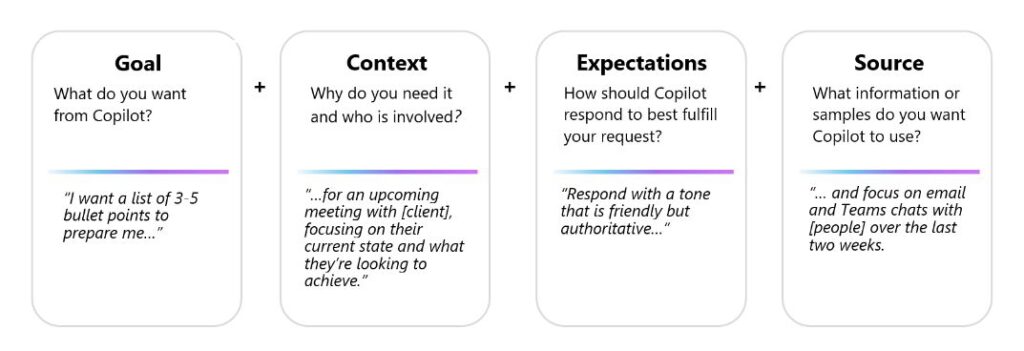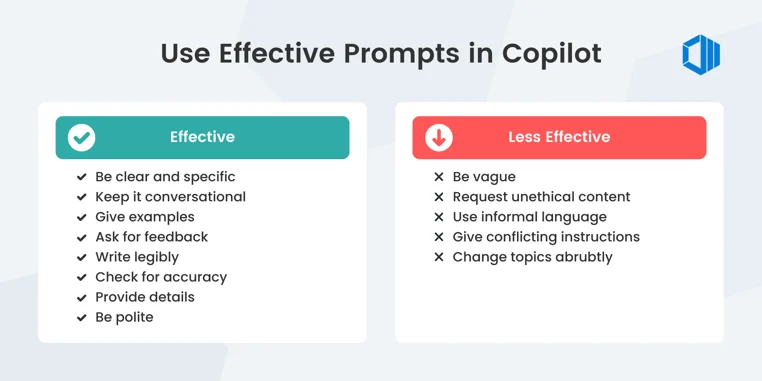Good prompting is key to getting better outcomes with Copilot. Just like there are techniques to help you communicate effectively with a human, there are tips to help you get better results with Copilot when writing prompts.
If you ask someone for something at work, you should provide context and resources to get good results. The same goes for working with Copilot. When you ask it to do something for you, the quality of what you get is a function of how you make the request. And it’s the key to harnessing the power and potential of generative AI. To get the best response, it’s important to know how to frame and phrase your copilot prompts.
How to write a good prompt
An effective prompt can significantly improve Copilot’s output, providing accurate and contextual responses.
Prompts can include four parts👇
▶ Destination
▶ Context
▶ Expectations
▶ Source
Let’s have a look on the following two prompts using Copilot:
- Prompt 1: Write a blog post about sustainable practices in agriculture.
- Prompt 2: Craft a 1500-word blog post for a general audience interested in sustainability, focusing on the significance and benefits of sustainable agricultural practices like organic farming and agroforestry. Include real-world examples, innovative technologies, and insights from reputable sources. Conclude with a reflection on the importance of these practices and a call for collective efforts to embrace them.
As a result, Prompt 2 will give you a richer and more concise blog post draft.
Here is another example of a prompt that includes a goal, context and expectations:
“Draft an outline of a training manual on time management. Our audience includes professionals who work in a hybrid environment and must constantly attend virtual meetings and meet deadlines. The tone of the document needs to be friendly and suggestive.”

Creating an effective prompt with Copilot
The following steps highlight the key points to consider when creating an effective prompt
1. Start with the end in mind
Specify the output you want from Copilot. Do you want bullet points or an essay? Will this be an email or the start of a brainstorming session? Generative AI is characterized by imitation – large language models work by imitating human conversations. So try to give examples of what you want the output to look like.
2. Define the phase
Provide contextual or relevant details about what outcome you are working towards. If you’re preparing for a client meeting or trying to write a rousing all-hands speech, let Copilot know. If it should focus on a specific client, which one? And what part of their campaign are you thinking about?
3. Define all parameters
If you specify which information sources or examples Copilot should use, you will get better results.
4. Customize the delivery
Define your expectations for Copilot’s response. What target audience is it aimed at? What kind of tone are you thinking for this task? Usually this includes an explanation of who you are and what you want to achieve.
What else needs to be considered for great prompting? Check out more tips here.
Summary: Effective Prompting with Copilot


